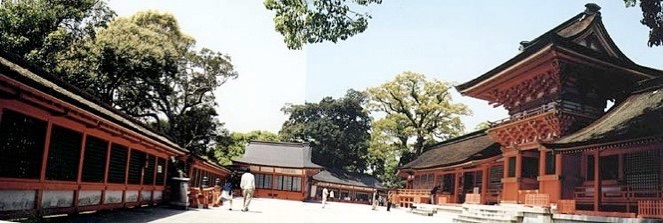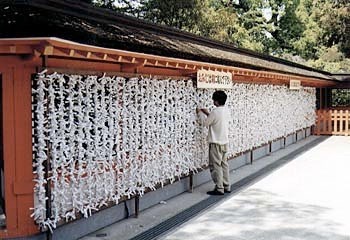
































So many Kansai shrines are located in Kyoto and Nara, places that by now are crowded urban corridors, that it's refreshing to visit such a grand shrine in such a quiet, peaceful natural setting. The greenery was incredible; supposedly the trees in this forest have never been cut - at least not since the shrine was built in the 7th century.
At least one time during their stay, every foreign visitor to Japan gets taken to a shrine and told to buy an "omikuji" fortune - basically a roll-of-the-dice in which you get a piece of white paper that tells you your fortune, ranging from very good to very bad. You read the fortune and then tie the piece of paper onto a tree or (in this case) a section of the wall. It wasn't always so: the custom apparently began with people tying only the bad fortunes to tree branches so the bad luck would blow away in the wind. But times change, as do customs, and eventually I guess people just thought it was fun to tie the little white pieces of paper regardless of what they said. Today at every shrine in Japan, at least one tree or other location is covered in white - whether it's snowing or not.

